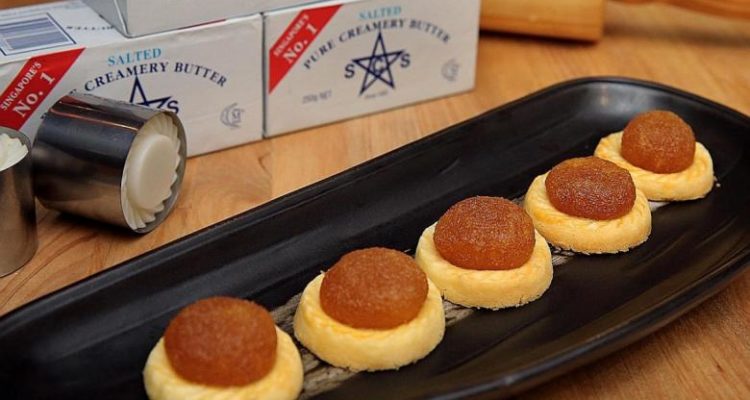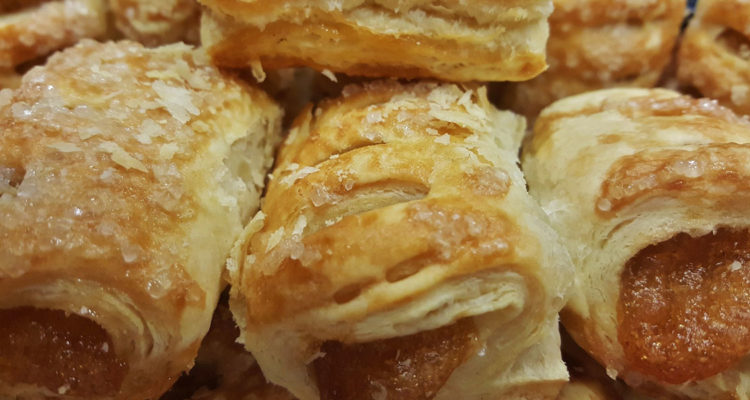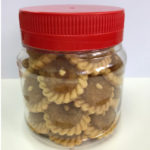
Pineapple tarts; A buttery, small, bite-sized pastry well known to be one of the key factors that have increased the weights of people all around.
So what makes them so good?
Is it merely the convenience of having these little pastries being able to quench the sudden urges to have a snack? Or perhaps the way it can be easily passed around and shared with our families and friends?
Does it matter?
Probably not, especially as I reach out to snag the last tart off the plate while writing this.
A quick Wikipedia search would lead us to the humble start of how the little snack was created;
Pineapple tart is a small, bite-size pastry filled or topped with pineapple jam, commonly found throughout different parts of Southeast Asia such as Indonesia (kue nastar),[6] Malaysia (Baba Malay: kueh tae or kuih tair,[7] Malay language: kuih tat nanas), Brunei and Singapore in various forms.[6]
The pineapple tart was possibly invented back in the 16th century when the pineapple, a fruit native to South America, was introduced by Portuguese merchants to Asia, specifically the Malay Peninsula.[3][4][1][2] A similarly influenced pastry, known as pineapple cake or pineapple pastry, is also found in Taiwan, South Korea and Japan.
Which brings a thought to mind: How did the pineapple tarts arrive in Singapore?
Well, once upon a time, Singapore in the mid-1800s had so much pineapple fruit readily available that people were complaining about the fruits blocking out landing places and staircases! In 1849, it was the third most cultivated crop in Singapore by acreage and was often grown as a catch crop alongside rubber trees, which required a considerably longer amount of time to mature. However, the sweet-sour juicy fruit also faced a number of challenges when it came to being shipped off on longer distances; Mainly, it did not fare well on the long journeys and was difficult to keep from rotting as it equated to a longer time out as well.
Thus, entrepreneurs came up with the idea of canning pineapples, leading to a boom in the industry as it allowed the exportations to spread out across the world, creating and providing a lot more job opportunities for the communities of Singapore as one of the earliest manufacturing industries born.
With these, the pineapple tart was eventually born by the various cultures brought in by the different colonials and early immigrants, forming a bite-sized snack of ethnic harmony.
These bite-sized snacks are an amalgamation of ethnic influences in Singapore: a distinctly European buttery biscuit base topped with a dollop of Nyonya-style pineapple jam scented with spices like star anise, cloves and cinnamon, native to this part of the world.
In Hokkien and Cantonese, pineapple is called ‘ong lai’, which literally means ‘fortune come’. The naturally golden pineapple fruit was seen as a symbol of wealth and prosperity, used in Chinese rituals like rolling it into a new house to welcome riches into the home. Pineapple tarts also became ubiquitous during the Lunar New Year as it gained popularity as an auspicious gift for family and friends.
Did you know? There were even pioneers of Singapore crowned as Pineapple Kings!
For more information about the Pineapple Kings and the rare images kept by our very own National Archives of Singapore, check this blog out!
Psst… Our local NLB is also a great source of information about pineapples and their influence in Singapore!
With that said, let us return to talking about the addicting little treat.
As the years go by and the eras roll forward, so do the creative touch of our pastry bakers.
The tart whose classic look would form the image of a little delicate flower waiting to be consumed at once has achieved even more recognition by the hands of these different cultural roots as well as bringing the other types of pineapple tarts to attention to the classic-lovers.
For example, the Taiwanese Pineapple Cake has a rectangular shape and a mix of pineapple-winter melon jam filling, adding milk powder and parmesan cheese powder to the dough mixture which changes the texture of the pastry and adds a touch of that mild, sweet-pungent flavors to the taste.
Food For Thought shares with us the difference between Malaysian Pineapple Tarts and Taiwanese Pineapple Tarts, bringing out detailed observations of their unique points.
So which type of Pineapple Tarts do you like?
If you have yet to try the classic open-faced pineapple tarts or the enclosed golf ball pineapple tarts, do give our humble little store a try!
?Contact us with the Contact Form or call/WhatsApp us at 8213 8199 today!?




